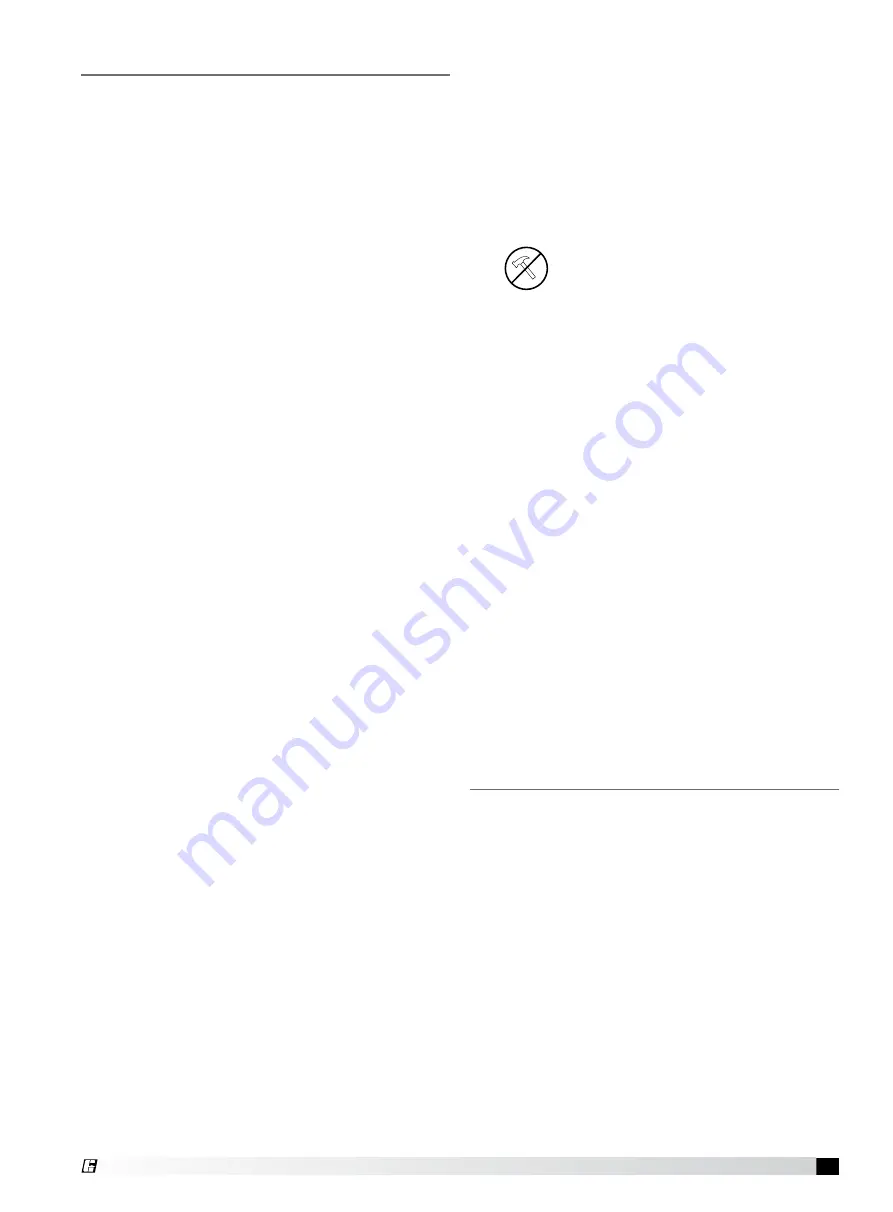
9
Centrifugal Single-Width Blower
®
The intent of this procedure is to allow a field service
technician to replace bearings with the fan remaining
in place in its intended application. All work can
be conducted by accessing the bearings by either
removing a shaft guard, a weatherhood or working
under a weatherhood (if applicable). This is dependent
on the size of the unit. This procedure assumes the
power source has been locked out prior to removing
guards and covers, belts and pulleys have been
loosened and removed properly and extended
lubrication lines have been disconnected at the
bearing. In some cases, it may be necessary to remove
the fan inlet cone and wheel if the bearings cannot be
removed due to corrosion or damage.
Bearing Removal
This procedure assumes proper safety measures have
been taken.
• Read and follow all instructions carefully.
• Disconnect and lockout power before installation
and maintenance.
• Driven sheaves and belts have already
been removed.
•
Arr. 3 fans (if applicable)
will need the inlet ducting
removed to access the non-drive bearing removal.
• Shaft black coating can be removed with a solvent
similar to a brake/carburetor cleaner.
1. Scribe a line around the shaft by both bearings
and around the bearing base to the bearing
support or write down the measurement from the
end of the shaft to the bearings. This will help in
repositioning the new bearing and wheel cone
overlap.
2. Follow the bearing manufacturers’ procedures for
removal and installation.
3. Before removing the bearing bolts, make sure the
shaft is supported slightly. Remember to consider
the wheel weight on the shaft. (Arr. 3 may need
the wheel to be suspended through an access
door on top of the fan.)
4. Remove both bearings from the shaft and clean/
remove any burrs using an emery cloth or file.
5. Clean mounting surface of any dirt or grease.
Bearing Installation
1. Before installing, read bearing manufacturers’
procedures. Before putting the new bearings on
the shaft, you may need to break what is called
swivel torque on the bearings (depending on style
of bearing). This is done by holding the bearing
housing securely and being able to move the inner
bearing race around freely.
2. Apply light film of oil on shaft, then gently slide the
new bearings onto the shaft.
Do not hammer bearing onto shaft!
3. Align bearings on shaft with the previous scribe
marks that are on the shaft and lock bearing to
shaft.
4. Put bolts into mounting surface and bearings. Do
not tighten.
5. Remove blocks if shaft is supported. (Arr. 3
release the weight of the wheel onto the bearing).
6. Set bearings on support with the scribed marks
locating the bearings. Make sure bearings are
square and level with the shaft.
7. Tighten bolts and torque bearing bolts, bearing
set screws/locking collars as per bearing
manufacturers’ procedures.
8. Rotate shaft by hand to help allow the bearings to
help set in. Also at this time, listen for any unusual
noises such as wheel rubbing on cone and any
bearing noise.
9. Connect extended lube lines in new bearings if
needed.
10. Reinstall the drive sheaves and belts. Check the
belt alignment.
11. Make sure to reinstall all guards and follow proper
safety measures before starting up the fan.
Bearing Replacement
Motor maintenance is generally limited to cleaning
and lubrication. Cleaning should be limited to exterior
surfaces only. Removing dust and grease buildup on
the motor housing assists proper motor cooling. Never
wash-down motor with high pressure spray.
Greasing of motors is only intended when fittings are
provided. Many motors are permanently lubricated for
life and require no further lubrication. Motors supplied
with grease fittings should be greased in accordance
with the motor manufacturer’s recommendations.
Consult fan manufacturer for instructions on the
removal of replacement motors.
It is recommended to select VFD compatible motors
for CSB fans and connect the motors through a VFD
controller to avoid sudden torque on the impeller, and
the belts ensuring soft start and safe operation.
Motors






























